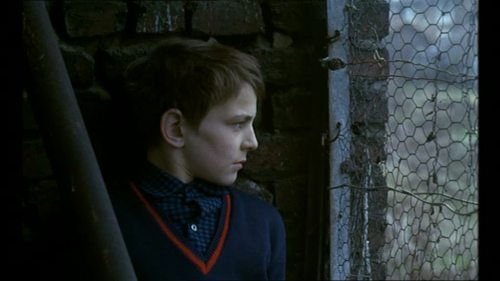
by Ed Howard
The Thing From Another World is one of the great classics of sci-fi horror, a taut minimalist study of a group of military men and scientists under pressure, hemmed in by an extraterrestrial monstrosity that crash-landed at a remote research station near the north pole. The film was produced by Howard Hawks, and though ostensibly the first directorial feature of editor Christian Nyby, it’s well-known that Hawks was on the set giving, at the very least, comprehensive advice, and most likely taking over the directing chair for himself. Certainly, though the science fiction premise is unlike anything else in Hawks’ filmography, the film bears the director’s aesthetic signature and deals with some of his typical concerns. Indeed, the alien monster appears only sporadically, in brief flashes, mostly obscured by darkness. The film’s emphasis is not on its horror elements but on the dynamics within the tight-knit professional groups doing hard, dangerous work in the midst of this snowbound wasteland.
Among these men is Air Force Captain Patrick Hendry (Kenneth Tobey), who fulfills the role of the romantic hero even though, like Hawks’ Air Force before it, this is a film where individual characters matter far less than the group as a whole. The research station is populated mostly with minor, little-known actors (Dewey Martin, James R. Young, Robert Nichols, etc.), including several recurring Hawks bit players, which only enhances the impression that the individual personalities of these men are not meant to stand out. They exist only as a part of the group and, symbolically, as members of the human race. Hendry and his crew of military men are summoned to a research station near the north pole after a mysterious aircraft crashes with a tremendous impact some fifty miles away from the station. The crash immediately begins triggering strange phenomena: communications are disrupted and measuring instruments go haywire, while Geiger counters pick up traces of radiation from the vicinity of the crash. Hendry’s men are summoned by the brilliant scientist Dr. Carrington (Robert Cornthwaite) to help investigate the crash site and determine what happened. Of course, the crashed aircraft is no ordinary plane but a flying saucer, and though the military accidentally destroy it while trying to free it from the ice that hardened around it, they do recover the frozen body of one of the craft’s inhabitants, a massive alien trapped in a block of ice. (more…)






























 Click on names for archives
Writers/Founders
Click on names for archives
Writers/Founders